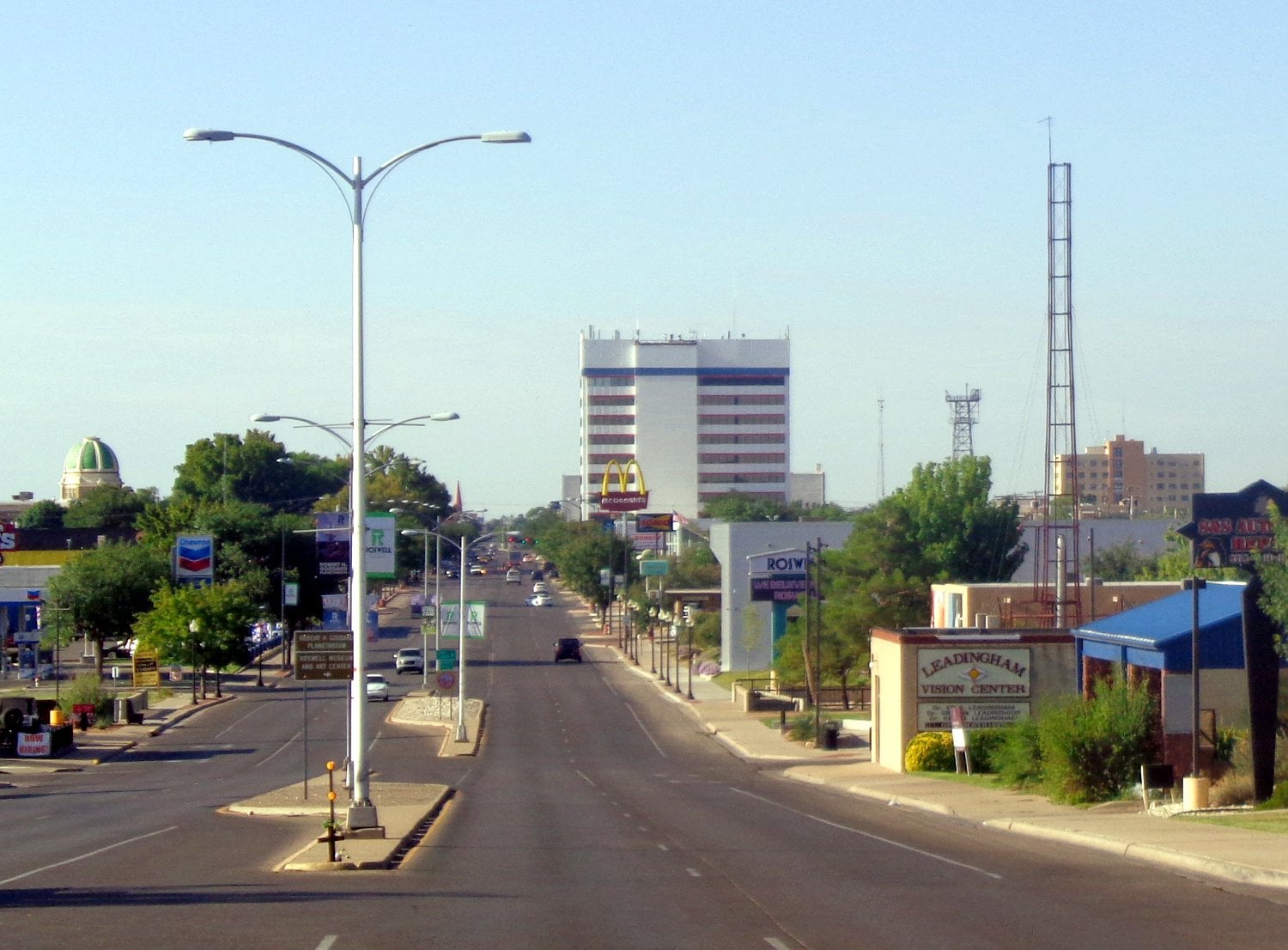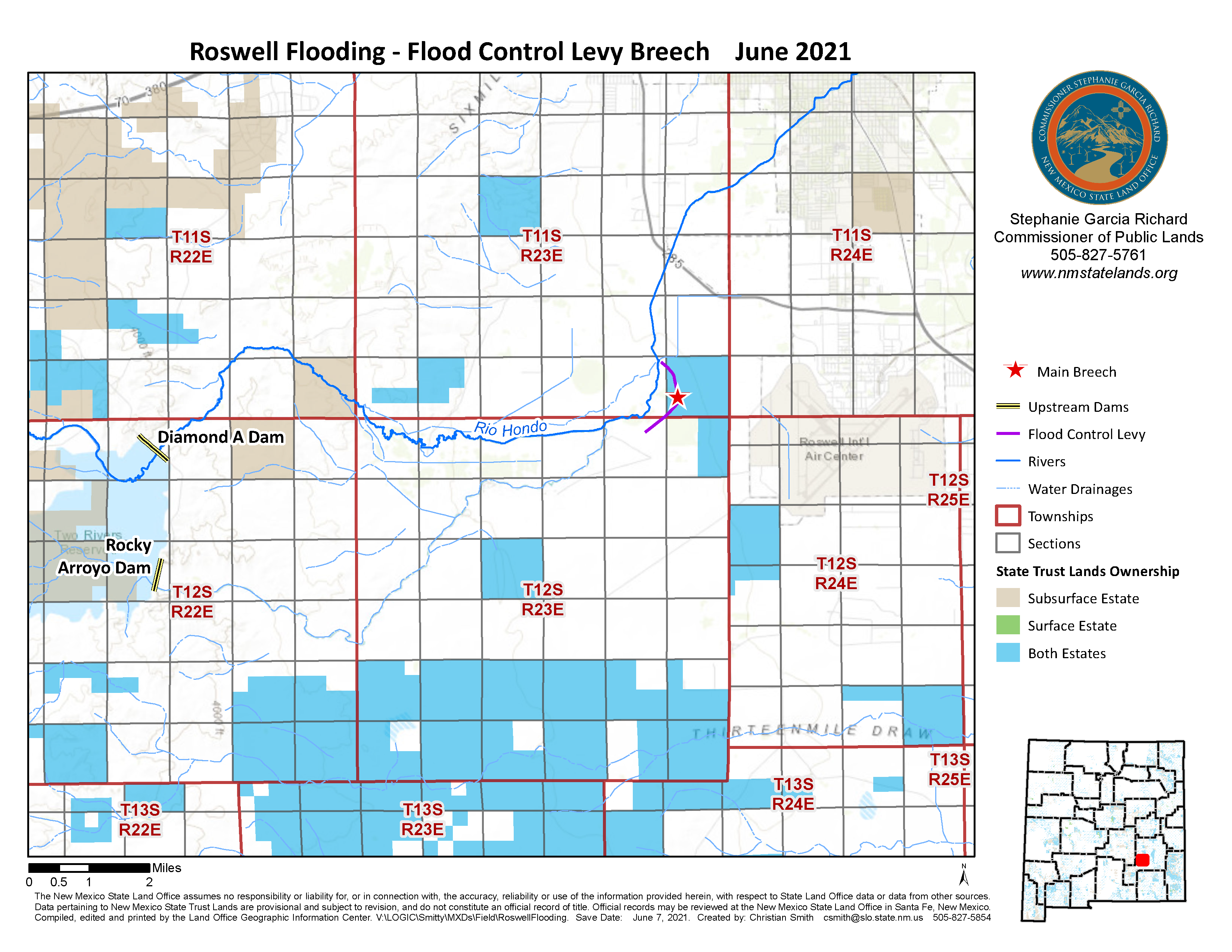Flooding In Roswell NM: A Deep Dive Into The Rising Waters
Roswell, New Mexico, is no stranger to its share of weather woes, but flooding in Roswell NM has become a topic that demands serious attention. From sudden downpours to overflowing rivers, this issue affects not just the environment but also the lives of residents. If you’ve ever wondered why Roswell experiences such intense flooding, you’re in the right place. We’re about to break it down for you, no sugarcoating.
Picture this: a serene town surrounded by desert landscapes suddenly transformed into a waterlogged zone. That’s the reality for many in Roswell during heavy rain seasons. The flooding problem isn’t just about inconvenience; it’s about safety, infrastructure, and the future of the community. As we dive deeper, you’ll see how this issue isn’t just local—it’s part of a broader conversation about climate change and urban planning.
Now, before we get into the nitty-gritty, let’s clear the air. This isn’t just another doom-and-gloom article. We’re here to provide actionable insights, solutions, and a roadmap to understanding what’s happening beneath the surface. So, grab your coffee, and let’s tackle this head-on.
Why Flooding in Roswell NM Matters
First things first, why should you care about flooding in Roswell NM? Well, aside from the obvious risks to life and property, the economic impact is massive. Homes, businesses, and infrastructure take a hit every time the water rises. And guess what? It’s not just Roswell; this is a pattern we’re seeing across the southwestern United States. But what makes Roswell unique in this story?
The geography of Roswell plays a huge role. Situated near the Pecos River, the city is prone to flash floods when heavy rains hit. Combine that with outdated drainage systems, and you’ve got a recipe for disaster. But it’s not all bad news. Communities are rallying, and local governments are stepping up to address these challenges. Let’s explore the key factors contributing to this issue.
Geography and Climate: The Perfect Storm
Roswell’s location in the Chihuahuan Desert might make you think water issues are a rarity, but that’s far from the truth. The desert climate means intense rainfall when it does happen, leading to rapid runoff. The soil, which isn’t designed to absorb large amounts of water quickly, exacerbates the problem. Plus, the proximity to the Pecos River means any overflow can quickly turn into a flood.
- Unveiling Logan Romero Plant Robert Plants Son Beyond
- Max Aminis Wife Family Unveiling The Comedians Life
Climate change is also playing its part. Warmer temperatures lead to more evaporation, which in turn creates more intense storms. This cycle isn’t going away anytime soon, making it crucial for Roswell to adapt and prepare for the future. But what does that adaptation look like?
The Impact on Residents and Businesses
Let’s talk about the human side of this issue. For residents, flooding means more than just wet shoes. It means damaged homes, disrupted lives, and financial strain. Imagine waking up one morning to find water inches deep in your living room. That’s the reality for many in Roswell.
Businesses also suffer. Closed roads mean fewer customers, and damaged inventory can be a death sentence for small businesses. The ripple effect is felt across the entire community. But it’s not all doom and gloom. Many residents and business owners are taking proactive steps to mitigate the risks.
Community Resilience: How Roswell is Fighting Back
Resilience is the name of the game in Roswell. Local groups are forming to address the flooding issue head-on. From community clean-up efforts to advocating for better infrastructure, residents are showing that they won’t back down. Here are a few examples:
- Volunteer-led flood response teams
- Workshops on flood preparedness
- Advocacy for better drainage systems
These efforts aren’t just feel-good stories; they’re making a real difference. When people come together, they can accomplish amazing things. But there’s still more work to be done.
Infrastructure Challenges and Solutions
One of the biggest culprits in the flooding saga is outdated infrastructure. Roswell’s drainage systems were designed for a different era, and they’re struggling to keep up with modern demands. This isn’t just a Roswell problem; it’s a nationwide issue. But what’s being done to fix it?
Investments in infrastructure are crucial. Upgrading drainage systems, building flood barriers, and implementing green infrastructure are all on the table. The key is balancing short-term fixes with long-term solutions. It’s not a quick fix, but it’s a necessary one.
Green Infrastructure: A Sustainable Approach
Green infrastructure is gaining traction as a solution to flooding. By using natural systems like rain gardens and permeable pavement, cities can reduce runoff and improve water quality. Roswell is exploring these options, and the results are promising. Not only do they help with flooding, but they also create more livable spaces for residents.
It’s a win-win situation. The environment benefits, and so do the people who live there. But implementing these solutions isn’t without its challenges. Funding, education, and community buy-in are all essential components.
Climate Change: The Elephant in the Room
We can’t talk about flooding in Roswell NM without addressing the elephant in the room: climate change. Rising temperatures and changing precipitation patterns are making extreme weather events more frequent and severe. This isn’t just a theory; it’s a reality that’s impacting communities worldwide.
So, what can be done? The answer lies in a combination of mitigation and adaptation. Reducing carbon emissions is crucial, but so is preparing for the changes that are already happening. It’s a complex issue, but one that must be tackled head-on.
Adapting to a Changing Climate
Adaptation strategies are key to managing the impacts of climate change. For Roswell, this means everything from updating building codes to investing in early warning systems. Education is also a critical component. When people understand the risks, they’re more likely to take action.
It’s not just about protecting property; it’s about protecting lives. Every step counts, no matter how small. And the good news is that progress is being made. But there’s still a long way to go.
Data and Statistics: The Numbers Don’t Lie
Let’s talk numbers. According to the National Weather Service, Roswell has seen an increase in heavy rainfall events over the past decade. In fact, the number of days with more than an inch of rain has doubled in some areas. These numbers are alarming, but they’re also actionable.
Studies show that for every dollar spent on flood prevention, four dollars are saved in damages. That’s a compelling argument for investing in infrastructure and preparedness. But it’s not just about the numbers; it’s about the people behind them.
Understanding the Data
Breaking down the data can be overwhelming, but it’s essential for making informed decisions. From rainfall patterns to economic impact, the information is out there. The challenge is translating that data into action. Local governments and organizations are working hard to do just that.
It’s a collaborative effort, and the results are promising. By using data to drive decision-making, Roswell is paving the way for a more resilient future. But it’s not a one-size-fits-all solution. Each community has its own unique challenges and opportunities.
Future Outlook: What’s Next for Roswell?
So, where does Roswell go from here? The future looks bright, but it’s not without its challenges. Continued investment in infrastructure, education, and community engagement will be key to managing the flooding issue. But there’s reason to be optimistic.
Technological advancements are offering new solutions, from early warning systems to advanced modeling tools. These innovations are helping communities prepare for the worst while hoping for the best. And as the world continues to change, so too must our approach to managing it.
The Role of Innovation
Innovation is at the heart of solving the flooding problem in Roswell. From smart drainage systems to AI-powered weather prediction, technology is providing new ways to tackle old problems. But it’s not just about gadgets and gizmos; it’s about using these tools to empower people.
When communities have access to the right information and resources, they can make informed decisions. That’s the power of innovation. And it’s not just happening in Roswell; it’s a global movement.
Conclusion: Taking Action
As we wrap up this deep dive into flooding in Roswell NM, it’s clear that this is a complex issue with no easy answers. But that doesn’t mean we should throw in the towel. On the contrary, it means we need to double down on our efforts to find solutions.
Here’s what you can do: stay informed, get involved, and advocate for change. Whether it’s supporting local initiatives or pushing for policy changes, every action counts. And remember, the future is in our hands. Together, we can create a more resilient Roswell—one that’s ready to face whatever comes its way.
Table of Contents
- Flooding in Roswell NM: A Deep Dive into the Rising Waters
- Why Flooding in Roswell NM Matters
- Geography and Climate: The Perfect Storm
- The Impact on Residents and Businesses
- Community Resilience: How Roswell is Fighting Back
- Infrastructure Challenges and Solutions
- Green Infrastructure: A Sustainable Approach
- Climate Change: The Elephant in the Room
- Adapting to a Changing Climate
- Data and Statistics: The Numbers Don’t Lie
- Understanding the Data
- Future Outlook: What’s Next for Roswell?
- The Role of Innovation
- Conclusion: Taking Action



Detail Author:
- Name : Ashlynn Marvin
- Username : carmen.price
- Email : feil.kadin@kulas.com
- Birthdate : 1980-05-28
- Address : 31655 Samantha Crossroad Suite 413 Cummerataville, DE 01526
- Phone : 212.494.0636
- Company : Strosin Ltd
- Job : Insulation Installer
- Bio : Earum iusto molestiae omnis magnam. Delectus rerum sint saepe maiores. Ut velit suscipit sunt aut ea sint.
Socials
instagram:
- url : https://instagram.com/anahi_kiehn
- username : anahi_kiehn
- bio : Et qui aliquam dolore quam est sit. Eaque tenetur optio adipisci vitae atque omnis.
- followers : 3613
- following : 1001
tiktok:
- url : https://tiktok.com/@akiehn
- username : akiehn
- bio : Maiores ea totam a incidunt est aut ullam. Iure occaecati et nihil deserunt.
- followers : 271
- following : 480
facebook:
- url : https://facebook.com/kiehn2005
- username : kiehn2005
- bio : Molestiae ex ex cumque ullam ut. Maiores id esse facere asperiores qui.
- followers : 6815
- following : 2304
linkedin:
- url : https://linkedin.com/in/anahi_kiehn
- username : anahi_kiehn
- bio : Rerum accusamus cumque sint quia sequi.
- followers : 5000
- following : 1812